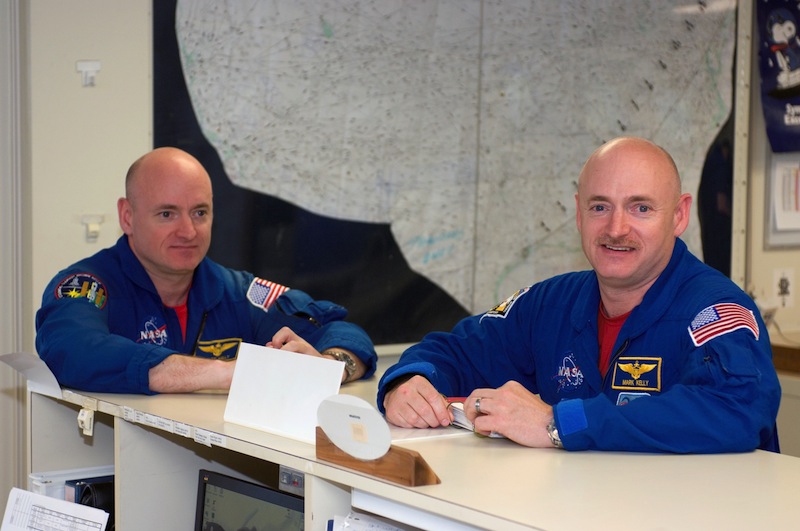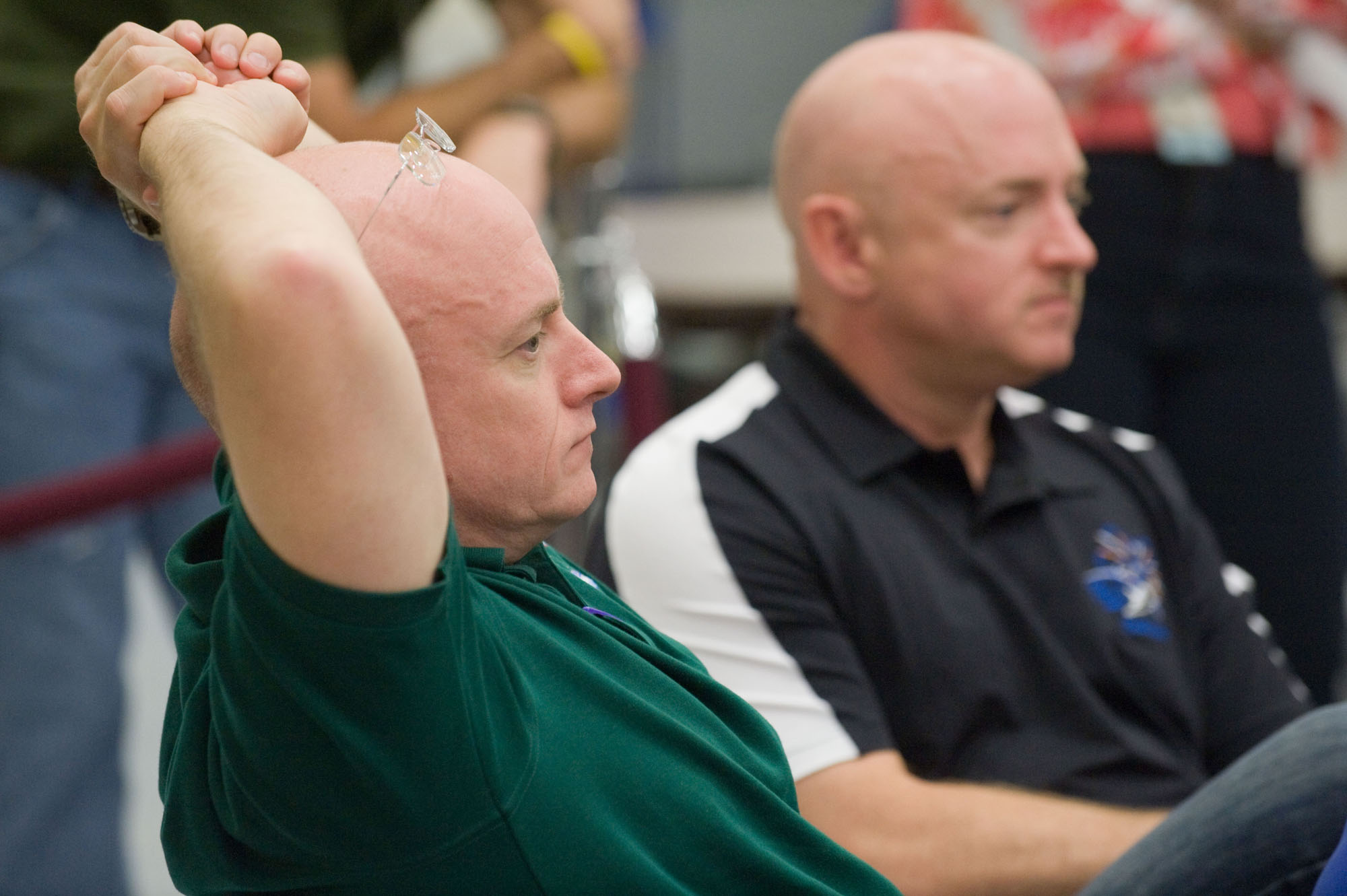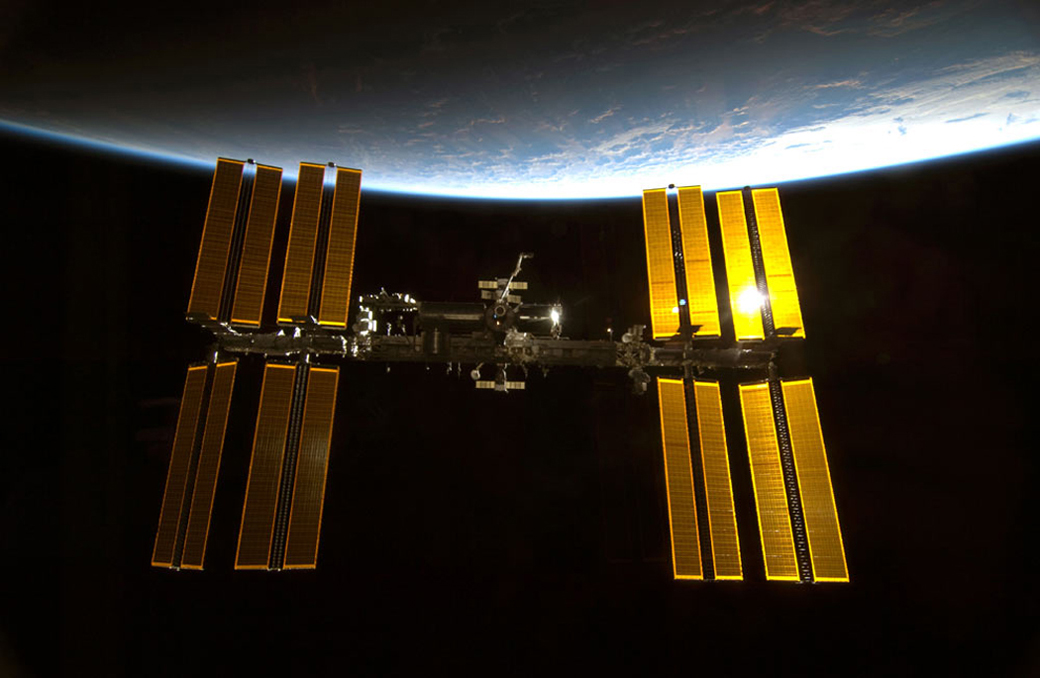NASA Picks 10 Experiments for Unprecedented Astronaut Twin Study (Video)

The only set of astronaut twins are set to become test subjects in an unprecedented NASA investigation into how weightlessness impacts the human body.
No, NASA isn't planning to track the Winklevoss twins on their Bitcoin-funded romp to the edge of space with Virgin Galactic.
Rather, NASA will focus on veteran astronaut Scott Kelly, who will embark on a year-long mission to the International Space Station in March 2015, and his identical twin brother, retired astronaut Mark Kelly, who will stay put on on Earth, acting like an experimental control.[Twins In Space: NASA's Twin Astronauts Mark and Scott Kelly (Photos)]

Officials with NASA's Human Research Program announced Friday (March 7) that they will fund 10 investigations as part of their overall study of the Kelly brothers in space and on Earth.
The study will require the 50-year-old twins to give regular samples of blood, saliva, urine and stool; they'll also have to undergo physiological and psychological tests at regular intervals before, during and after the one-year space mission, according to NASA.
"We realized this is a unique opportunity to perform a class of novel studies because we had one twin flying aboard the International Space Station and one twin on the ground," Craig Kundrot, deputy chief scientist of NASA's Human Research Program, said in a statement. "We can study two individuals who have the same genetics, but are in different environments for one year."
Currently, a typical stay aboard the International Space Station is about six months, and only a few humans have ever flown in space for a year or longer. (All of them were Russian cosmonauts aboard the space station Mir.) NASA officials have said that Kelly's longer voyage will allow researchers to more fully examine how spaceflight affects the human body, from subtle changes on the genetic level to changes in the makeup of gut bacteria. The extended trip might also give NASA officials insight into how well astronauts would fare on long missions to an asteroid or Mars.
Get the Space.com Newsletter
Breaking space news, the latest updates on rocket launches, skywatching events and more!

The Kelly brothers were both Navy test pilots before they were selected as astronauts in 1996. Collectively, they've flown seven missions to date and both have served as space shuttle commanders. Mark retired from NASA and the Navy in 2011 as his wife, former congresswoman Gabrielle Giffords (D-Ariz.), was recovering from a failed assassination attempt.
Here is NASA's list of the 10 winning proposals, which will receive a combined $1.5 million for their research over three years:
- Emmanuel Mignot, Stanford University School of Medicine, HERO Twin Astronaut Study Consortium (TASC): Immunome Changes in Space
- Michael Snyder, Stanford University, HERO Twin Astronaut Study Consortium (TASC) Project: Longitudinal integrated multi-omics analysis of the biomolecular effects of space travel
- Brinda Rana, University of California, Proteomic Assessment of Fluid Shifts and Association with Visual Impairment and Intracranial Pressure in Twin Astronauts
- Susan Bailey, Colorado State University, Differential effects on telomeres and telomerase in twin astronauts associated with spaceflight
- Fred Turek, Northwestern University, HERO Twin Astronaut Study Consortium (TASC) Project: Metagenomic Sequencing of the Bacteriome in GI Tract of Twin Astronauts
- Andrew Feinberg, Johns Hopkins University School of Medicine, Comprehensive whole genome analysis of differential epigenetic effects of space travel on monozygotic twins
- Christopher Mason, Weill Medical College of Cornell University, The Landscape of DNA and RNA Methylation Before, During, and After Human Space Travel
- Mathias Basner, University of Pennsylvania School of Medicine, HERO Twin Astronaut Study Consortium (TASC) Project: Cognition on Monozygotic Twin on Earth
- Stuart Lee, Wyle Laboratories, Metabolomic And Genomic Markers Of Atherosclerosis As Related To Oxidative Stress, Inflammation, And Vascular Function In Twin Astronauts
- Scott Smith, NASA Johnson Space Center, Biochemical Profile: Homozygous Twin control for a 12 month Space Flight Exposure
Follow Megan Gannon on Twitter and Google+. Follow us @SPACEdotcom, Facebook or Google+. Originally published on Space.com.

Join our Space Forums to keep talking space on the latest missions, night sky and more! And if you have a news tip, correction or comment, let us know at: community@space.com.

Megan has been writing for Live Science and Space.com since 2012. Her interests range from archaeology to space exploration, and she has a bachelor's degree in English and art history from New York University. Megan spent two years as a reporter on the national desk at NewsCore. She has watched dinosaur auctions, witnessed rocket launches, licked ancient pottery sherds in Cyprus and flown in zero gravity on a Zero Gravity Corp. to follow students sparking weightless fires for science. Follow her on Twitter for her latest project.









